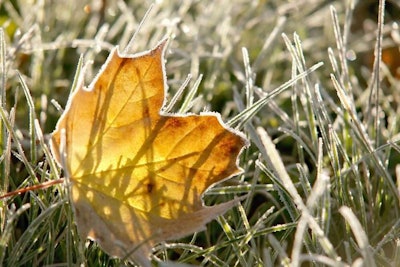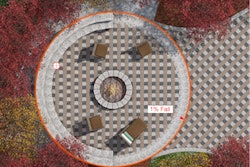
Preparing your clients' properties for winter weather can help set them up for success. Here are five things that you can do.
Get digging
While you can never be 100 percent sure when the first frost is going to come – and it has already come, in a big way, for much of the country – it’s a good idea to get a head-start on clearing out the beds of any vines and foliage of annuals or vegetables. This organic material can be added to a compost pile, but be sure to throw away plants that are diseased.
Perennials should be trimmed as they begin to die back. Some of them, such as hellebores and black-eyed Susans, can provide winter interest or food for birds. Others should be trimmed in the spring, as they depend on their fallen leaves to help them survive the winter.
Bulbs and tubers, such as dahlia, cannas, and gladiolus, should be dug up and stored in a cool, dry place. These plants are not hardy enough to handle winter and are at risk of rotting.
Mulch beds
Mulch is able to keep the soil at a stable temperature during the winter and prevents roots from heaving out of the ground, which can happen during the alternating freezing and thawing periods. About 2 to 3 inches of mulch is enough to keep perennials safe.
According to the University of Illinois Extension, it is best to wait until the weather is consistently cooler before applying the mulch so that the soil has a chance to cool as well. When mulching perennials for the winter, it is best to select lighter mulching material so the mulch won’t suffocate roots. Pine needles, straw, and peat moss are good choices.
Hydrate trees
Trees are often forgotten during the winter because they have gone dormant, but there is still plenty of activity going on beneath the surface. It is a good idea to water them throughout the fall so they are prepared for winter. Water deeply to help with root growth.
Be sure to water every three or four weeks during winter – when the temperature is above freezing of course. It is best to water trees early in the day so they have time to absorb the moisture before it possibly freezes at night.
While deciduous trees don’t offer outward signs of drought stress during the winter, evergreens may turn yellow, red, or purple. They may also turn brown at the tips of the needles, with the discoloration progressing toward the twig.
Hold the pruning shears
The point of pruning is to stimulate growth and the last thing you want to do is encourage that growth right before the trees go into the bitter cold of winter. While the leaves may have already fallen, giving you a good view of where you need to trim, don’t be overeager.
The University of Minnesota Extension says that the prime time for the majority of pruning is late in the dormant season. Pruning at the wrong time can result in reduced flowering and increased risks of disease. Nonetheless, bear in mind that dead, sick, or hazardous branches should be removed as soon as possible, no matter what the season.
Winterize irrigation system
Not all clients have irrigation systems, but those who do and live in northern areas should be sure to winterize their sprinklers. Otherwise, they’ll end up with costly damage that will have to be taken care of come spring.
The blow-out method is the most common way of winterizing. Compressed air is forced through the system and sprays the excess water out of the sprinkler heads. This method, while effective, requires special tools. And working with compressed air requires special attention to safety. This is one of those areas where your customers would do well to leave the work to professionals.









